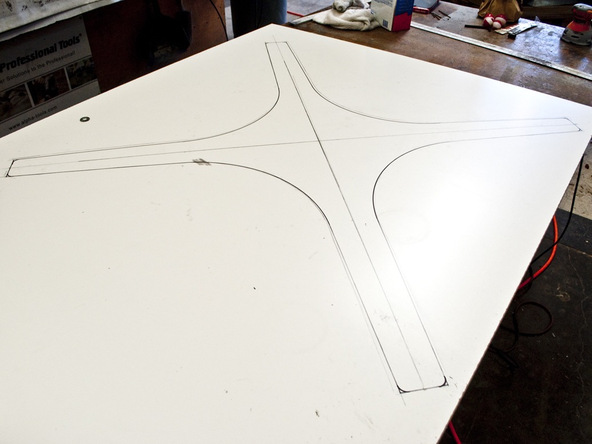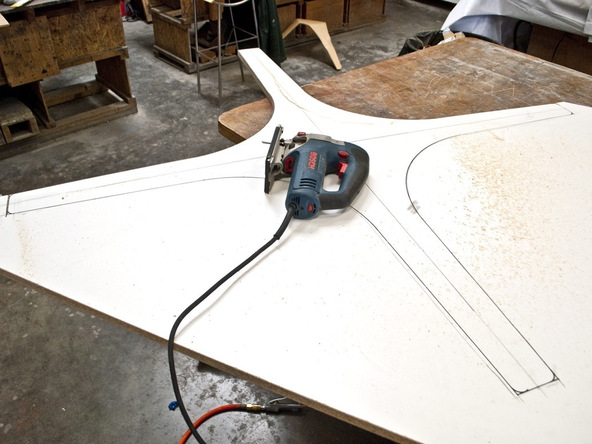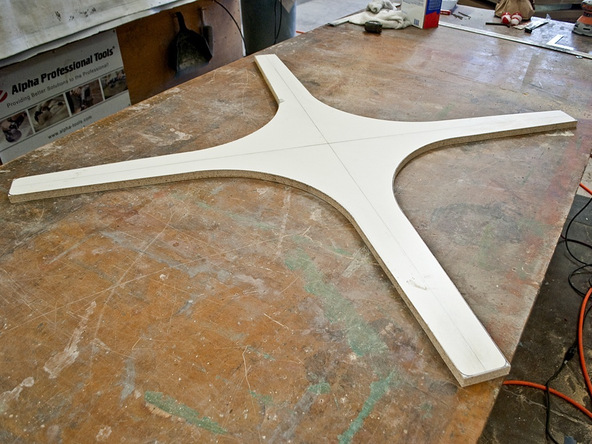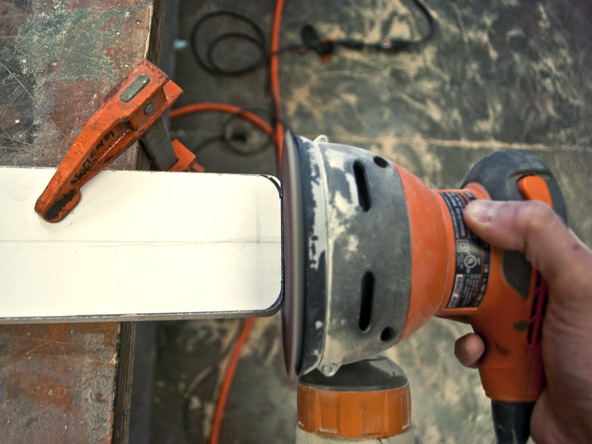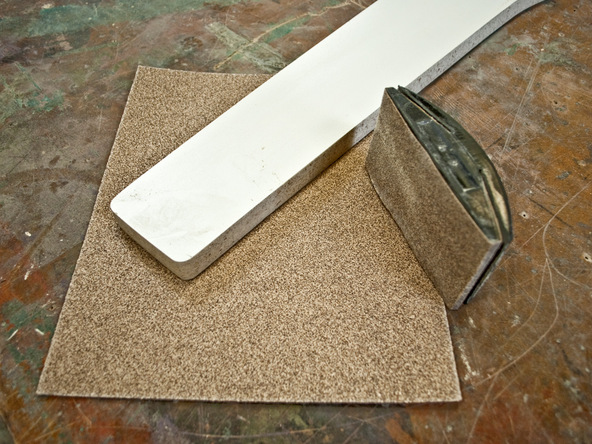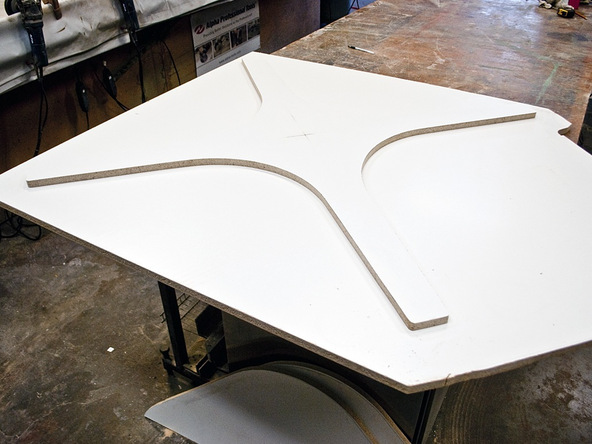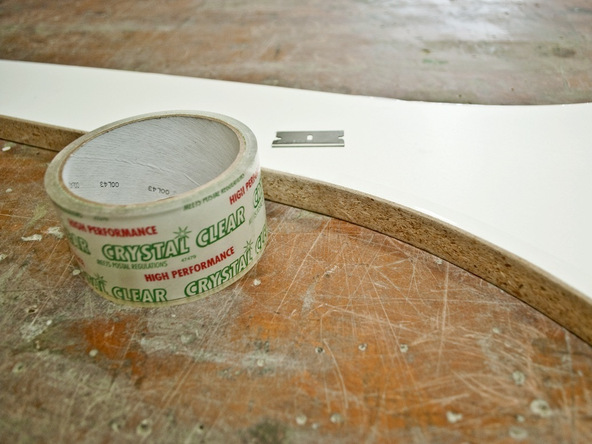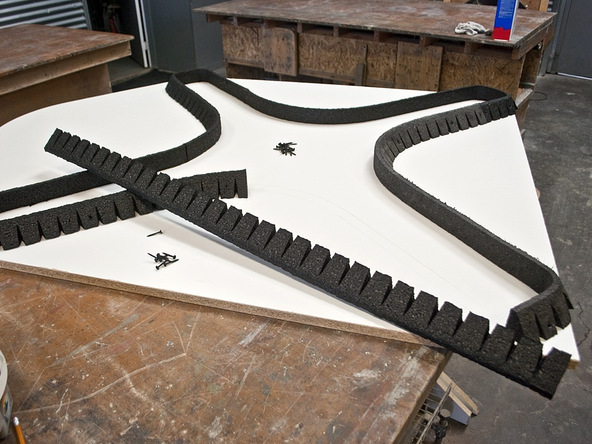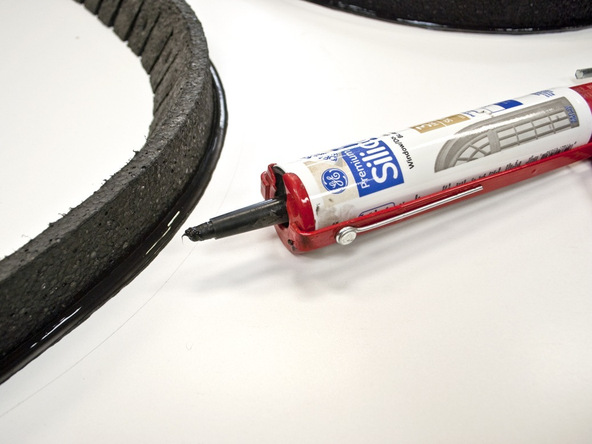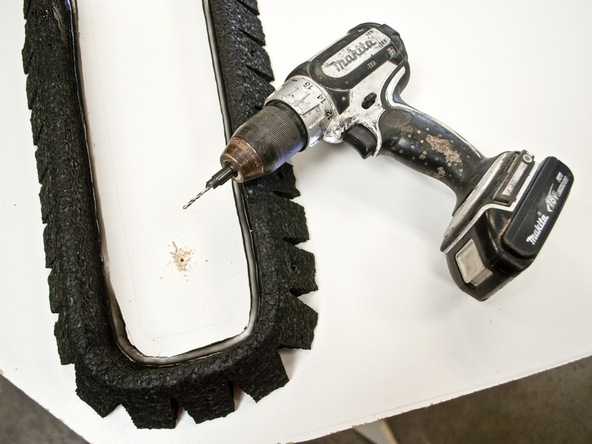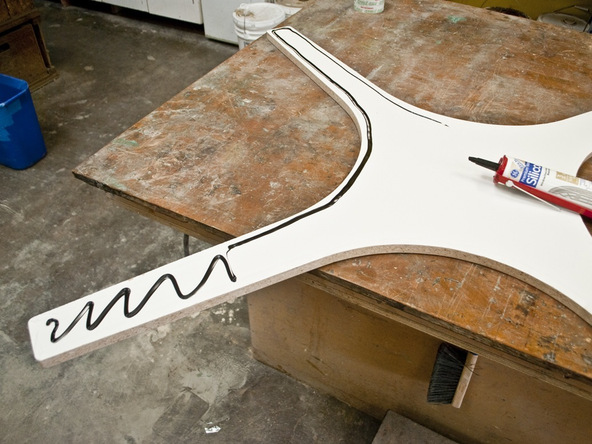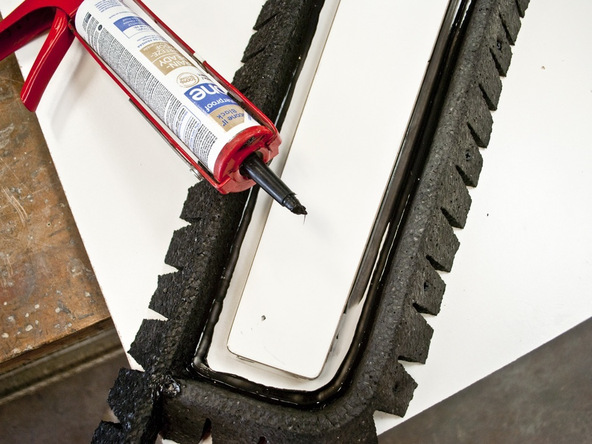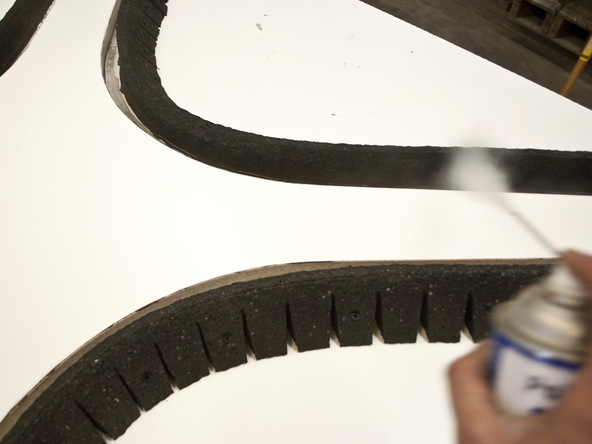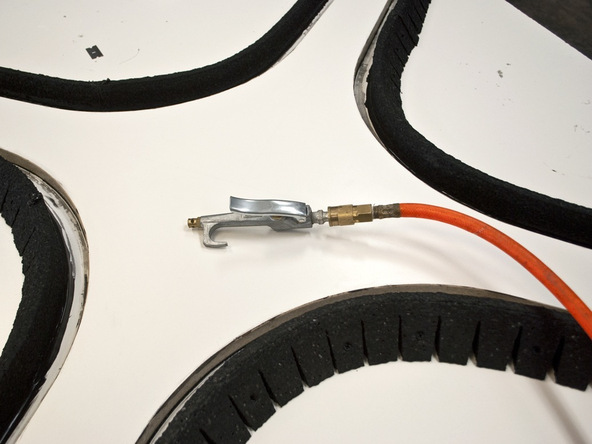Bent Concrete Side Table
ONE: Make the Master Mold
This project was completed during one of our recent trainings featuring guest instructor Chris Franzen from SureCrete. The unique characteristics of a fiber-reinforced concrete mix make it possible to cast concrete into a flat mold, wait until it enters a “false-set,” and then bend the concrete. For this, we need a flexible mold, and in this guide, we’ll outline the steps to create a polyurethane rubber mold that will work for this technique.
What You’ll Need
- 3/4″ Melamine
- Jigsaw
- Marker
- Caulking Gun
- 100% Silicone Door and Window Caulk
- Clear Packing Tape
- Razor Blades
- Orbital Sander
- Mold Release
Step 1 – Cut Out the Positive
Step 2 – Sand the Edges
Step 3 – Tape Edges and Trace Out the Positive
Step 4 – Build the Form
Step 5 – Silicone the Positive to the Baseboard and Secure With Screws
Step 6 – Prepare the Form for Casting Rubber
Next: Mix Rubber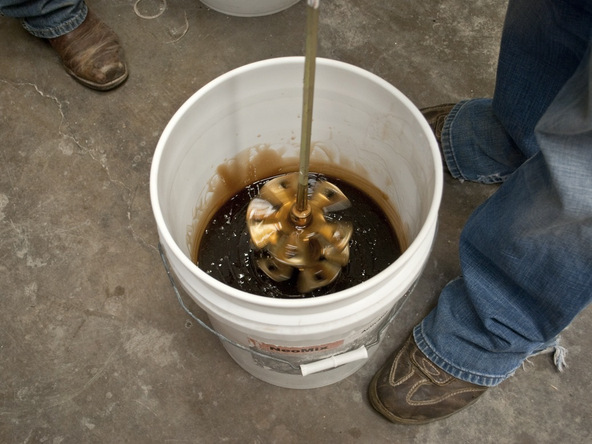

Polytek 75-60 Polyurethane Mold Rubber provided ideal flexibility for this project. Work quickly when mixing polyurethane mold rubber to avoid…

